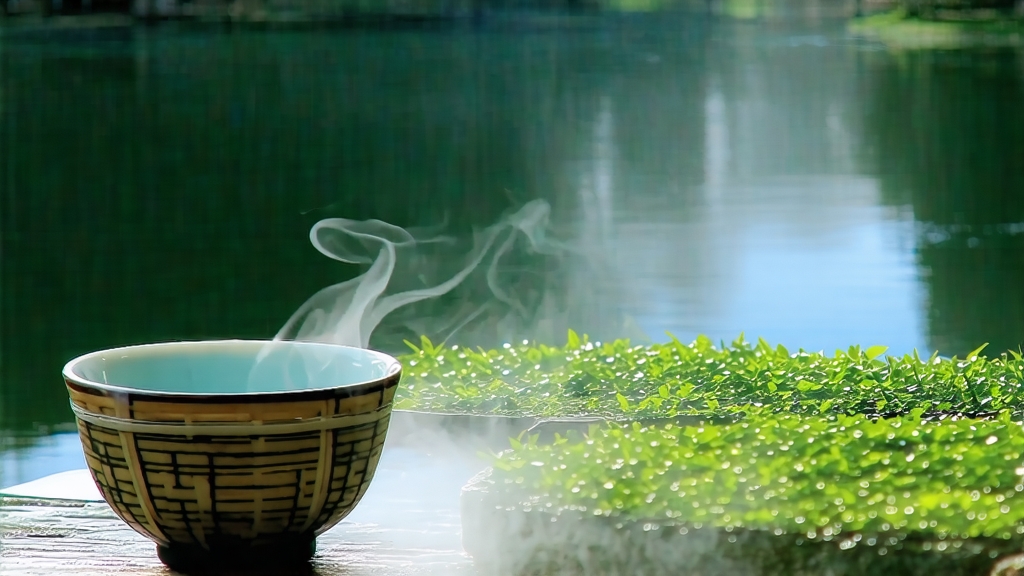
Longjing—often spelled Lung Ching in older romanization—is the single green tea most Chinese would save for a honored guest. Its flat, jade-green blades look almost too perfect to be natural, yet every leaf is shaped by a human palm that has learned, over centuries, to coax fire and fragrance into equilibrium. To understand Longjing is to listen to a quiet chronicle of soil, dynasty, and craftsmanship that begins beside West Lake in Hangzhou, moves through imperial courts, and now travels in suitcases to every continent.
-
Historical echoes
The first credible mention appears in the Tang Dynasty (618-907) “Classic of Tea,” but Longjing’s fame crystallized during the Qing. Legend claims the Qianlong Emperor, while visiting the Hugong Temple, was so enchanted by the tea bushes that he pocketed a handful of leaves. Later, palace etiquette required ladies-in-waiting to press the imperial leaves flat between sheets of rice paper; the gesture accidentally invented the sword-shaped leaf still prized today. Whether apocryphal or not, the story reveals how Longjing became a symbol of refined sovereignty, a green gold that could flatter an emperor yet remain rooted in a farmer’s field. -
Micro-terroirs within one name
“Longjing” is legally protected; only leaves harvested within the 168 km² core zone of West Lake may bear the designation. Within that radius, five micro-terroirs are ranked by connoisseurs:- Shífeng (Lion Peak) – highest elevation, quartz-rich soil, longest lingering sweetness.
- Méijiāwǔ – slightly cooler air, leaves yield a paler liquor and orchid nose.
- Wēngjiāshān – protected southern slope, mineral bite reminiscent of wet stone.
- Hǔpáo (Tiger Running) – mythic spring water irrigates bushes, infusions feel weightier on the tongue.
- Yángméǐng – eastern exposure, earliest spring warmth, earliest picking date.
Beyond the lake, “Zhejiang Longjing” is grown in counties like Xin’chang and Songyang; it is still pan-fired green tea, but the thinner air and red soil produce a sharper, more astringent cup. For international buyers, the lesson is simple: check the latitude and longitude, not just the brand.
-
The choreography of picking
Timing is merciless. Pre-Qingming leaves—plucked before the 5th of April—contain the year’s highest concentration of theanine and catechins, delivering a broth that is almost creamy. One kilogram of premium Shífeng Longjing demands 60,000 buds, each consisting of an unopened spear plus one unfolded leaf. Experienced pickers work with thumbnails, never fingers, to avoid oxidation from skin heat. By 10 a.m. the dew must be off; by 3 p.m. the same leaves must already be in the wok. Any delay and the grassy volatiles convert into harsh chlorophyll tones. -
Pan-firing: hand versus machine
Traditional kill-green occurs in a cast-iron wok held at 80 °C, a temperature that feels like a hot summer sidewalk yet must not scorch the leaf. Ten distinct hand motions—抓 (grasp), 抖 (shake), 搭 (press), 拓 (spread), 捺 (slide), 推 (push), 扣 (snap), 甩 (flick), 磨 (grind), 压 (compress)—are executed in a 25-minute relay. The master’s palm becomes a thermometer: too cool and the leaf stays grassy; too hot and proteins denature into unpleasant bean skin flavor. Modern drum machines replicate the motions at 220 rotations per minute, saving labor but sacrificing the micro-variations that create hazelnut and white sesame notes. The compromise adopted by many reputable estates is “half-hand”: machine for the first 70 % moisture reduction, human for the final shaping and aroma lock. -
Shaping the sword
While still at 30 % moisture, the leaf is pressed against the wok wall with a muslin cloth, ironing it into the characteristic flat profile. The pressure must be firm enough to rupture cell walls for future flavor release, yet gentle enough to keep the bud intact. A master can judge by ear: a crisp rustle signals readiness, a wet slap means retreat. The finished leaf measures 2.5 cm by 0.7 cm, dimensions that fit perfectly inside a Ming-dynasty white-tea bowl, itself modeled on the